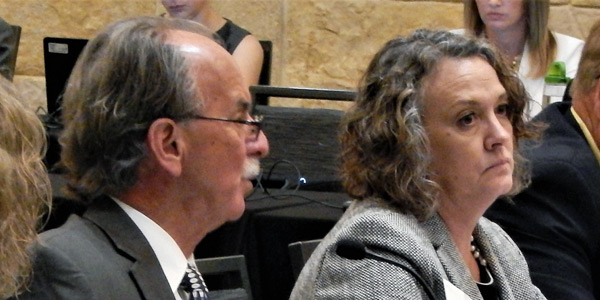DENVER — The SPP Regional State Committee unanimously agreed last week with its Cost Allocation Working Group to leave the aggregate study’s safe harbor cost limit unchanged at $180,000/MW.
The study assesses which projects are necessary to satisfy transmission service requests (TSRs) to move energy around the SPP system, as well as who pays for those projects. Transmission upgrades under the safe harbor limit are base-plan funded through the RTO’s highway/byway approach.
The safe harbor is applied when the aggregate study’s waiver criteria are met:
- The utility does not have more than 20% of its designated resources (used to meet a load-serving entity’s capacity margin requirement) come from wind energy when the TSR is granted.
- It has a five-year minimum commitment term for the TSR.
- The utility does not have designated resources greater than 125% of its forecasted load when the TSR is granted.
SPP has not recommended a change to the safe harbor amount since it was first established in 2005. Staff does file an annual letter at FERC (ER05-652), testifying as to whether the amount is correct.
Adam McKinnie, chief regulatory economist with the Missouri Public Service Commission and the CAWG’s chair, said an annual limited review of the safe harbor could include a discussion of the FERC letter and the methodology behind SPP’s recommendation on whether to change the amount.
CAWG members, staff and stakeholders have been discussing the correct methodology for calculating the limit. No consensus has been reached, but the discussions continue, McKinnie said.
The RSC also agreed with the CAWG to review the base-plan funding eligibility criteria and the safe harbor limit on an annual basis, with in-depth review at least once every five years. Both votes were unanimous.
The group just spent two years conducting the first review of the safe harbor waiver criteria. McKinnie estimated it would take nine to 12 months to conduct intensive reviews of safe harbor issues in the future, while a limited review could be done during a quarter and focus on issues of interest to the RSC or stakeholders.
“Frankly, we don’t want this to be our full-time job,” John Krajweski, a consultant with the Nebraska Power Review Board, told the RSC.
The Kansas Corporation Commission’s Shari Feist Albrecht agreed, saying, “The motion provides sufficient flexibility and doesn’t impede the RSC’s ability to request a study.”
SPP Wind Capacity Nears 17 GW
Bruce Rew, SPP’s vice president of operations, said the RTO is continuing to successfully integrate large amounts of wind energy.
The RTO currently has 16,280 MW of installed and operational wind capacity, with another 100 MW of wind registered but not yet operational. It expects another 5 GW to become operational before production tax credits expire in 2020, and it has another 18 GW in its interconnection queue.
SPP set a record for North American RTOs in April when it recorded a 54.47% wind penetration level. Rew noted SPP had not seen wind penetration levels of 40% until last Christmas. It exceeded 40% for seven days in the first quarter, and another seven days in April.
SPP’s Integrated Marketplace currently has 191 market participants, up from 172 a year ago, with 125 classified as financial-only and 66 as asset-owning. Rew said the RTO lost a financial-only entity during the second quarter.
The RTO’s balancing authority has successfully maintained NERC control performance standards while maintaining high system availability, he said. The day-ahead market’s posting has not been delayed during the last year, Rew said, and the real-time balancing market has successfully solved 99.95% of all intervals.
Interested Observers: Colorado’s PUC
Colorado Public Utilities Commission Chairman Jeff Ackermann and Commissioners Frances Koncilja and Wendy Moser were guests of honor and given front-row seats for the July 24 RSC discussion.
SPP CEO Nick Brown welcomed the commissioners, along with the new members of the RSC.
“It’s always been a strategy for SPP, and one we identify every strategic cycle, to maintain and establish a good relationship between staff and the RSC,” Brown said. “We’ve recognized for more than a decade how important it is to get you engaged in the process.”
The Colorado PUC will be among the bodies passing regulatory judgment on the Mountain West Transmission Group’s potential membership in SPP. The commission has held two public information sessions on the merger and has scheduled a third for Aug. 24. (See SPP, Peak Reliability Pitch RC Services for Mountain West.)
“The [Mountain West] expansion is an important decision, not only for the 10 members of the Mountain West, but for SPP as a whole,” Brown said. “We encourage you to stay engaged.”
— Tom Kleckner






